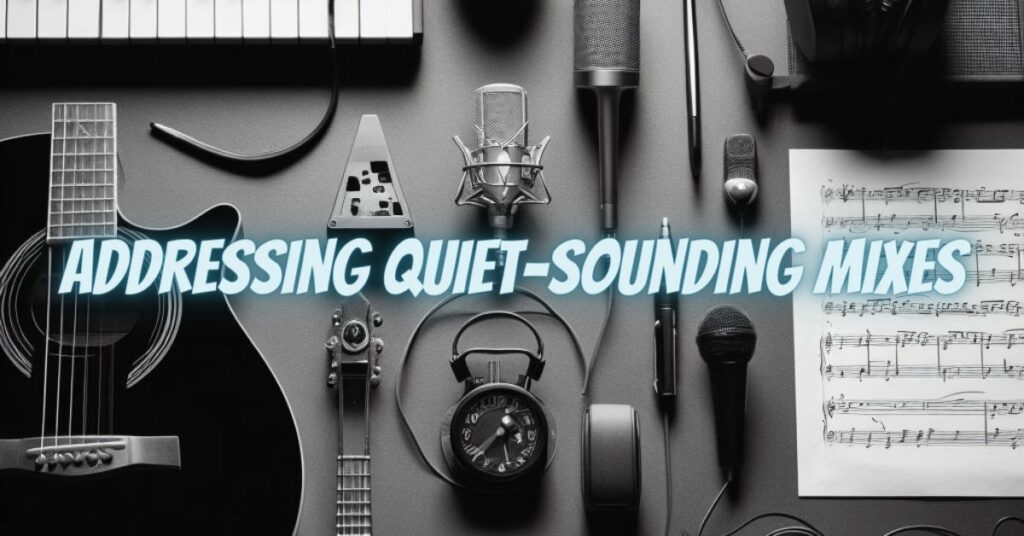One of the most common challenges in music production is achieving the right balance of volume in a mix. It can be frustrating to put in hours of work, only to find that your mix sounds unusually quiet when compared to professional recordings. In this article, we’ll delve into the various factors that can lead to a mix sounding quiet and provide tips to help you address this issue effectively.
- Inadequate Gain Staging: Proper gain staging is crucial for maintaining the ideal balance of volume throughout the recording and mixing process. If your initial recordings have low levels, it can be challenging to bring them up to a satisfactory volume during mixing.
Solution: Ensure that your individual tracks and channels have sufficient input gain during recording. Pay attention to the gain staging in your digital audio workstation (DAW) to maintain consistent levels.
- Underused Headroom: Keeping enough headroom is essential to prevent clipping and distortion in your mix. If you’ve maxed out the volume on individual tracks, your mix may sound quiet due to a lack of headroom.
Solution: Aim to have each track peaking around -6 dB to -3 dB during recording and mixing. This provides enough headroom for processing and prevents digital clipping.
- Lack of Compression: Compression is an essential tool for controlling dynamic range and ensuring that quieter elements are brought up in the mix. Without adequate compression, your mix might sound unbalanced and lacking in perceived volume.
Solution: Apply compression to individual tracks and the mix bus as needed. Experiment with different compression settings to maintain dynamics while increasing perceived loudness.
- Improper EQ Balance: An unbalanced frequency spectrum can make a mix sound quieter. If you have too many overlapping frequencies, it can lead to muddiness and a perceived drop in volume.
Solution: Use EQ to carve out space for each instrument in the mix. Cut frequencies that aren’t necessary and emphasize the essential elements to create clarity and balance.
- Inadequate Panning: Panning is vital for creating a sense of space and width in a mix. A narrow, center-focused mix can sound quieter because it lacks the perceived fullness and dimension of a well-panned mix.
Solution: Experiment with panning to give each instrument its place in the stereo field. Wider panning can make your mix sound more expansive and vibrant.
- Use of Excessive Reverb: Overusing reverb can make a mix sound distant and less present. When the mix lacks clarity and directness, it can seem quieter than desired.
Solution: Be judicious with reverb and consider using shorter decay times to maintain a closer, more present sound. Adjust wet/dry ratios to balance the mix effectively.
- Mastering and Loudness: Sometimes, a mix may sound quiet in comparison to commercial tracks due to differences in loudness. Professional mastering can significantly impact perceived loudness and overall quality.
Solution: Consider professional mastering to ensure your mix reaches a competitive loudness level while maintaining clarity and dynamic range.
- Monitor and Listening Environment: Your monitoring system and listening environment play a significant role in how you perceive mix volume. Inaccurate monitors or a non-treated room can lead to misjudging the overall loudness.
Solution: Invest in quality studio monitors and acoustic treatment for your listening environment. Regularly reference your mix on various playback systems to ensure consistency.
A mix sounding quiet can be a frustrating experience, but with attention to proper gain staging, headroom, compression, EQ balance, panning, and other critical factors, you can achieve a balanced and competitive mix. Remember that achieving professional loudness might also require mastering. Regular practice, experimentation, and fine-tuning your mixing skills will ultimately help you create mixes that sound vibrant, balanced, and up to industry standards in terms of loudness.


